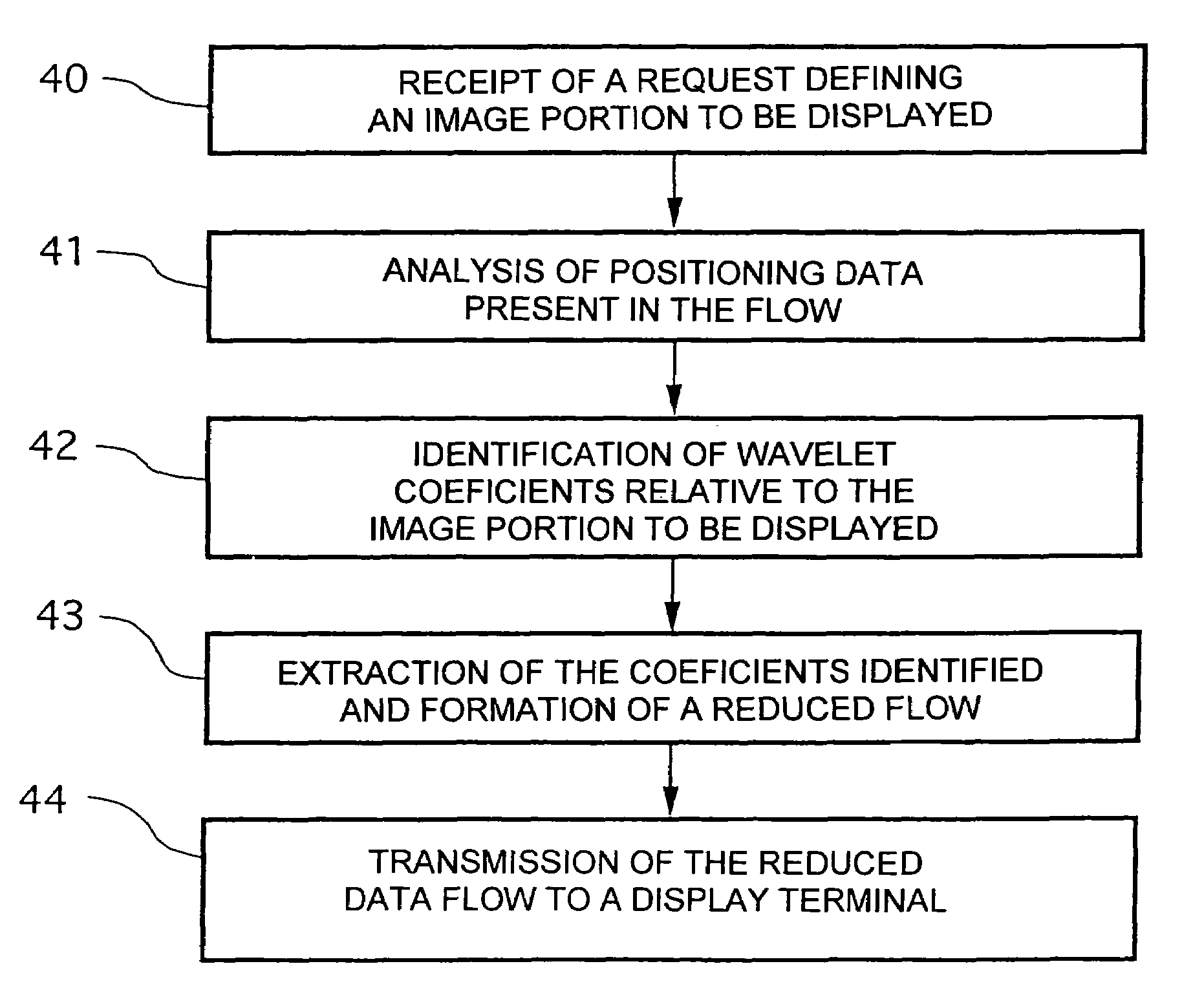Method of wavelet coding a mesh object
a mesh object and wavelet technology, applied in the field of representation and encoding of meshes or meshedencoding textures, can solve the problems of unnecessari burden on the communication network used for the transmission of wavelet coefficients, the server cannot pick out unnecessary coefficients and send, and the customer receives all wavelet coefficients, so as to achieve the effect of improving the compression rate of these coefficients
- Summary
- Abstract
- Description
- Claims
- Application Information
AI Technical Summary
Benefits of technology
Problems solved by technology
Method used
Image
Examples
Embodiment Construction
[0085]The general principle of the invention is based on the insertion of positioning data within a data stream generated during the wavelet encoding of a meshed object with at least two dimensions, so as to enable a selection and a selective transmission of the coefficients as a function of the zone of the object with which they are associated.
[0086]Referring now, to FIG. 1, a particular embodiment of the encoding method of the invention is presented.
[0087]Here we shall consider the case of an object with at least two dimensions encoded according to a method known as the “wavelet” method. It may be recalled that, according to such a method, the object has, associated with it, a basic mesh and a plurality of wavelet coefficients corresponding to the refinements to be made to the basic mesh to reconstruct a representation of the object. Each node of the basic mesh is therefore associated with a wavelet coefficient.
[0088]It is assumed that the steps of constructing the basic mesh and ...
PUM
 Login to View More
Login to View More Abstract
Description
Claims
Application Information
 Login to View More
Login to View More - R&D
- Intellectual Property
- Life Sciences
- Materials
- Tech Scout
- Unparalleled Data Quality
- Higher Quality Content
- 60% Fewer Hallucinations
Browse by: Latest US Patents, China's latest patents, Technical Efficacy Thesaurus, Application Domain, Technology Topic, Popular Technical Reports.
© 2025 PatSnap. All rights reserved.Legal|Privacy policy|Modern Slavery Act Transparency Statement|Sitemap|About US| Contact US: help@patsnap.com



